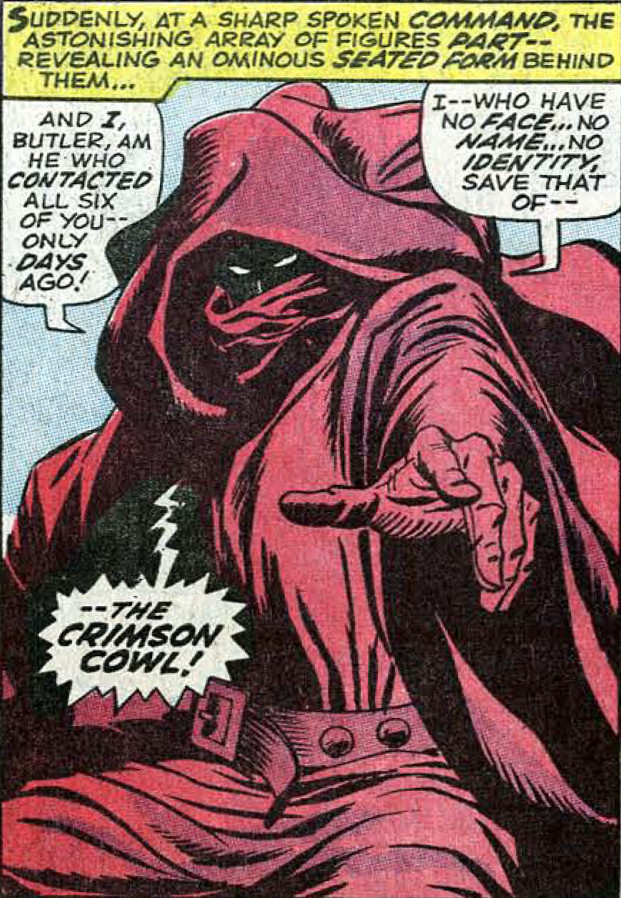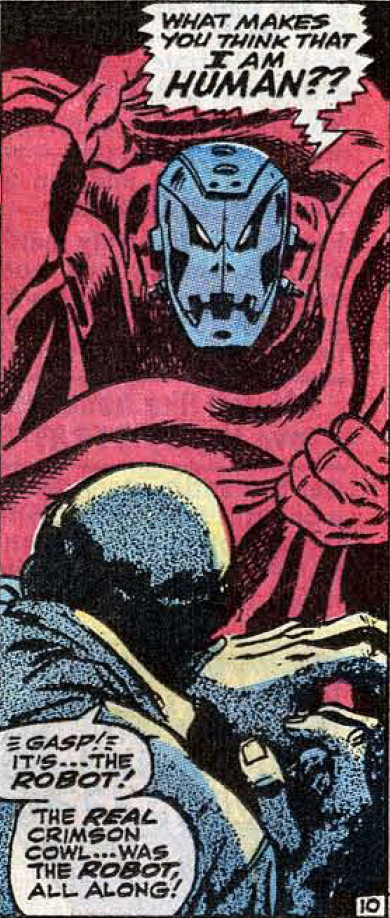Well, the first big summer blockbuster comes out this weekend – Avengers 2: Age of Ultron. Based on the original Avenger’s movie success, the fantastic track record of Marvel’s cinematic universe, including the shows made for television, and the marketing undertaken by them and their parent company, Disney, it is likely that this installment will make well over a billion dollars. Clearly, with a draw like that, the majority of moviegoers will be people who have only a cursory familiarity with the comics history that is the backdrop for the movie. So, this week I will try to give some background about the villain called Ultron.
I would venture a guess that most people know that Ultron is some sort of artificial intelligence that has grown too big and fast and has now become hostile towards its creator and, by association, the whole human race. Given the demographics of the audience, it is likely that people will say that this particular concept is reminiscent of the Matrix or Terminator movies. Ultron, however, appeared on the scene much earlier than either of these films.
The original appearance of Ultron was in Avengers (1961) issue #54, where he went by the equally bizarre name of the Crimson Cowl. He appears on the scene as the sinister leader of the new Masters of Evil – a group rounded out by the bunch of lesser-known super villains comprised of Klaw, the Radioactive Man, Whirlwind, the Melter, and the Black Knight (I guess pithy names were hard to come by in the 1960s). Nothing in either his appearance or in his mode of speech reveals his mechanistic, man-made origins, and no doubt he would have passed Alan Turing’s test.
The ensuing clash between the Masters of Evil and the Avengers features a set of one-on-one battles: Hawkeye vs. the Melter, the Black Panther vs. Whirlwind, Klaw vs. the Wasp, and Giant Man vs. the Radioactive Man. Despite being betrayed by the Black Knight, the Masters of Evil gain the upper hand and quickly subdue and imprison the Avengers. After some meaningless plot twists, including Jarvis, the Avengers butler, being subjected to mind control so that he appeared for a time as the Crimson Cowl, the real Crimson Cowl finally reveals himself to be Ultron-5.
The Avengers manage to get free and defeat the Masters of Evil, but they fail to catch Ultron-5. The story closes with a melodramatic threat from the robot that has more of the feel of a human villain simply dressed as robot rather than the artificial intelligence with thought patterns and behaviors quite different than Man’s. This overly abundant mimicry plagues almost every story of Ultron going forward, and the metal menace is often portrayed as having an inferiority complex, as being jealous that he is not quite human enough.
Ultron reappears a few issues later in #57. This issue not only fills in the back story of his origin, but it also includes the first modern appearance of the synthezoid called the Vision.
Visually patterned after the Golden Age hero of the same name, this Vision has a robotic body but a human mind. He quickly rebels against his ‘father’ and sides with the Avengers against the ambitions of Ultron.
It seems from the Avengers 2 trailer that we will be seeing at least a glimpse of the Vision in the movie as this still shot shows.
Issue #57 is also notable for the iconic ending involving the remains of the Ultron-5, who is destroyed in his clash with the Vision. A young boy discovers Ultron’s severed head and plays with it against the narrative of Percy Bysshe Shelley’s poem Ozymandius.
The Ultron saga doesn’t end there. Issue #58 fills in some of the gaps in both the Vision’s and Ultron’s back story. It seems that Ultron was created ‘accidently’ by Hank Pym (aka Ant-Man [the original], Giant Man, and Yellowjacket) and that the nascent intelligence quickly grows beyond his ability to control it. Feeling (exactly how?) malevolent towards his creator, Ultron erases Pym’s memory, and then chooses not to kill him but to exact revenge on him when he least expects it. When the Crimson Cowl ploy proves useless, this metallic Frankenstein creates the Vision as his agent of retribution, but rather than giving the Vision a machine mentality, Ultron imprints on him the brain patterns of the deceased Wonder Man, an old foe/friend of the Avengers from Issue #9.
Over the next decade, Ultron shows up in a variety of roles. Each time, he emerges with a new model number but with the same old insecurities, hostilities and delusions of grandeur that led to his defeat in earlier incarnations – so much for machine learning.
The interested reader can consult the Wikipedia article on this robot menace, but I advise against it. Ultron never rose to inspire the dread or wonder that other machines-run-amok have in other venues. It/he lacks the frightening, single-minded and logical purpose of Proteus from Demon Seed. Ultron never demonstrates the ruthlessness of the Terminator or the utter disdain to man that Agent Smith from The Matrix does.
Fortunately, the movie version of Ultron, what little has been revealed, seems a great deal more sinister and powerful; perhaps because the writers have borrowed from these more successful versions of out-of-control a.i., perhaps because our level of sophistication has increased. In any event, Avengers 2 looks to be a blast.





